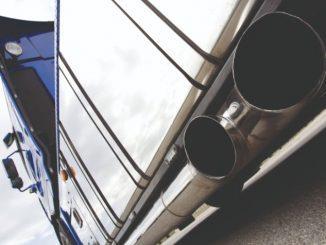
NOx emissions from trucks have dropped by at least 59% in just six years, driven by the industry’s £1.9bn investment in Euro-6 vehicles.
Government figures show a continual year-on-year decline since 2013 with the RHA predicting hauliers will have reduced NOx output by at least 80% by 2025.
In contrast, the RHA said the proportion of NOx emissions from other transport and passenger cars has increased, from 20% to 29% and 14.5% to 16% respectively.
However, in its own report assessing NOx emissions, the RHA said the government’s clean air zone (CAZ) strategy was having a damaging impact and had reduced the residual values of Euro-5 trucks and inflated the value of used Euro-6 trucks.
The report said: “Existing policy has unjustly caused a ‘stranded asset’ effect for the Euro-5 fleet of HGVs for negligible gain in reducing NOx emissions given the significant fall in emissions from lorries compared to all other vehicle types.
“This mistake is having a disproportionate effect on haulage.
“As much as £1.2bn has been wiped off the value of the 126,000-strong Euro-5 HGV lorry fleet as a direct result of the government’s CAZ plans.”
Chris Ashley, RHA head of policy on the environment, said hauliers were willing to invest in technology for a clean environment, but they needed confidence that the regulatory framework would not retrospectively undermine that investment: “As the government’s ‘green recovery’ agenda gathers pace we believe this positive experience can be applied to the decarbonisation agenda, but a repeat of DEFRA’s flawed clean air zone policy must be avoided,” he said.
“Imposing high charges on technology deemed ‘obsolete’ without first checking there is a sufficient supply of the desired technology is a recipe for disaster.
“It leads to stranded assets, market distortion and waste.”













